In the scope of plasticity tests, the plastic limit test is one of the simplest in dry-sample texturing. It provides the consistency and the degree of plasticity of a certain sample of soil. It is also used in the determination of Atterberg limits and thus this test influences engineering parameters of any project related to construction or building. So, what exactly makes plastic limit test so important and unique? It is because of the method, equipment and tools used to carry out the test. This piece of writing issues the complete and uncompromised description of the equipment needed for this test and explains the role played by each in accurate measurement to attain reliable values. Whether you are a suspense expert or a student, this manual gives you the essential understanding of the techniques of the test you need for practical application.
What is the Plastic Limit Test?
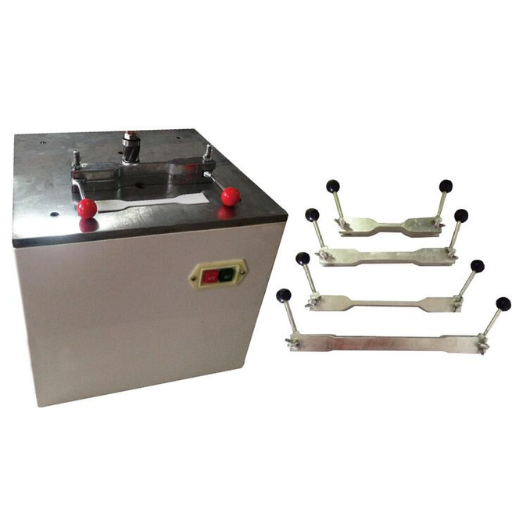
The plastic limit test is a systematic approach aimed at finding the moisture content at which soil changes from a plastic to a semi-solid state. This is done through repeated rolling of the soil sample to a 3 mm thick thread which, at some point, will start to crumble. This point is referred to as plastic limit. The test is important for geotechnical engineers since it aids in classifying the types of soils and their consistency, workability and strength behavior as well as the rigidity when changes in moisture content is introduced. Results are often expressed in percentage form. The Atterberg limits, which are critical indicators of soil properties, are partially constituted from those results.
Definition and Purpose of the Plastic Limit
The plastic limit is one of the fundamental soil parameters defining fine-grained soils, specifically clays and silts. It is one of the Atterberg limits which are essential for assessing the engineering properties of the soil in relation to its moisture content. The plastic limit marks the moisture content of the soil when it can be worked on as clay but possesses the ability to be sheared into pieces like a semisolid. The plastic limit offers critical information about soil workability and shear strength and is frequently used to evaluate compressibility, bearing capacity, and shrink-swell potential of the soil. More advanced work has shown the importance of this parameter in determining soil stabilization needs, risks of long-term settlement in construction works, or why certain settlements occur over time. Detailed work like this illustrates how the limit aids in geotechnical systems design ensuring safety and efficiency.
Importance of the Atterberg Limits
Atterberg Limits include the liquid limit, plastic limit and shrinkage limit. All of them together form critical parameters in the field of geotechnical engineering as they help assess and classify fine grained soils. These parameters assist engineers to assess the behavior of soil and its changing water content. Determining these limits allows practitioners to predict soil plasticity which is an important parameter with regards to deformation and stress.
Soil mechanics developments made recently focus on the increased use of Atterberg Limits Testing in assessing the stability of soil and its environmental sensitivity. The plasitic index and liquid limit obtained as by-products of these tests are vital in anticipating undesirable differentially settled layers, slope failures, and changes in soil hydraulic conductivity. For example, clays with high plasitic indices are very likely to swell and shrink, which may be dangerous for constructions. In addition, they are widely used in simulations to project how soil will behave over time, thus improving infrastructure adaptability. The Atterberg Limits are reliable and flexible, which is why they are fundamentally used in civil engineering and environmental geotechnics.
How the Plastic Limit Test Fits into Soil Analysis
Soil mechanics had some prominent milestones in older times; however, their innovations are considered rudimentary compared to modern advancements in the field. The innovation of computing devices and technologies has advanced dramatically. In the prior text discussions, we talked about gathering data from various documents which require a proper systematic approach. However, processing this data with advanced algorithms is close to impossible. Advanced tech effectively makes trying to reason properly feel equal to trying to solve a Rubik’s Cube while blindfolded. With this change, conducting a single test such as the Plastic Limit Test becomes far from enough. Finding the right balance requires a multi-dimensional approach while still focusing on codifying notions relative to one another to conduct appropriate assumptions just like population census models focus on gathering the whole population rather than a single region. Speaking of conducting a single test such as a Fluid Limit Test or Shrinkage Limit Test, such integrated approaches help cross-check ones findings. These foundation theories assist field experts develop stunning architectural constructions without hindrances in the future.
What Apparatus is Required for the Plastic Limit Test?
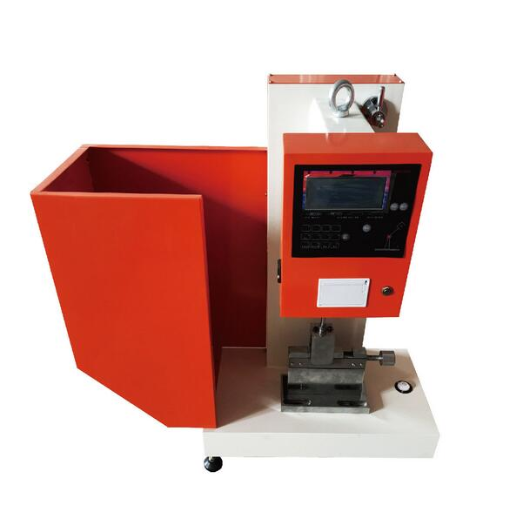
To perform a plastic limit test, the following equipment is needed:
- Flat glass plate: Provides a smooth, hard and long-lasting working surface.
- Rod or rolling tool: Serves to roll soil threads, usually small cylindrical sticks with a uniform diameter.
- Spatula: Mixing and handling soil samples.
- Moisture content containers: Lightweight, small containers meant for storing and pre-weighing soils to determine moisture content.
- Balance: A precision balance with an accuracy of at least 0.01 grams.
- Oven: Used for drying soil samples at a constant (105°C – 110°C) temperature.
These tools help obtain accurate and reliable results during testing.
Overview of the Plastic Limit Apparatus
The plastic limit apparatus are used to find out the plastic limit of soil, which is vital in geotech engineering. The tools used include evaporation dishes, robotic spatulas, precision moisture containers, high accuracy balances, and electric ovens. The equipment is built for easy adaptation of the test methods for ASTM D4318 or ISO 17892 12 standards to ensure uniformity of qualitative testing regression as international benchmarks.
The versatility of the plastic limit apparatus ensures it can accommodate both coarse-grained as well as cohesive soil types. Along with the soils precision elements enable the accurate determination of moisture content in the soil at the plastic and semi-solid boundary. The standardization plastic limit apparatus features make sure that the test or field experiments will always yield the same results, no matter the conditions, which makes the apparatus effective in proper soil classification and engineering evaluation of the soil. Accurate data is essential in analyzing the behavior of soil under different loads and in diverse environmental settings.
Key Components of the Atterberg Limits Test Equipment
- Liquid Limit Device
Determining the water content at which soil changes from a liquid to plastic state is its mechanically operated cup which rise to set height and is dropped to a hard surface. For the liquid limit device to function, it needs to adhere to ASTM D4318 and other international soil testing regulations which set standards on control of drop height and motion of the device.
- Grooving Tool
In conjunction with the previously mentioned liquid limit device, a specific tool known as the grooving tool creates a specific and uniform channel within the soil sample. It comes in many varieties such as the ASTM tool or the Casagrande tool, which are designed to particular specifications. As aforementioned, accurate grooving is essential and staggering alongside important with respect to measuring the flow consistency of the soil under controlled conditions.
- Plastic Limit Rolling Plate
The rolling plate assists in determining the plastic limit, providing a smooth surface for rolling of soil threads. These threads are shaped until a maximum diameter of 3.2 mm is achieved, at which point, they start to break apart. Results from this are very useful in determining the value of the soil’s plasticity index.
- Moisture Content Containers
The volatile substance analysis and moisture content analysis requires the use of small metal containers. These containers hold non-volatile substances, which, when closed, creates a controlled environment suited for weighted amounts of soil sample to be dried, thus determining the precise water amount.
- Balance (Precision Scale)
Measuring the weight of wet and dry soil samples also requires the use of standard precision balance set to 0.01 grams or even lower. This level of accuracy ensures that the calculated water content for the Atterberg limits assessment is reliable. Accuracy in this area is crucial as the Atterberg limits are sensitive to changes in moisture content.
- Thermal Oven
Soil samples are dried in a thermal oven at specific temperatures, usually around 110°C. Moisture content influences the accuracy of plasticity tests. For the most reliable results, consistent accuracy is required during the plasticity measurements.
- Sample Preparation Tools
To achieve homogeneity in the soil samples, uniform soil samples need to be prepared with the use of spatulas, mixing bowls, and specific drying pans. Samplings must be in a certain shape and size to reduce uniformity gaps that could differ due to material composition.
The Atterberg limits test, when performed with great precision, enables engineers to classify soils and estimate their behavior in construction, thus improving the safety and longevity of buildings and infrastructure. Vital data for soil mechanics can be processed using the components methodically.
How to Conduct the Plastic Limit Test?

- Prepare the Soil Sample
20 grams of soil passing through the No. 40 sieve should be taken. Furthermore, the sample should be air dried to ensure uniformity. All foreign matters and organic particles should be removed.
- Form a Test Thread
Using your fingers, shape the clump of dirt into a sphere that weighs approximately 1.5 to 2 grams. Subsequently, firm dirt on a flat surface into long shapes.
- Determine the Soil’s Plastic Limit
As you continue shaping the long forms of dirt, the thickness should gradually become 1/8th inch (3.2 mm). Additionally, the dirt is said to have achieved its plastic limit if it crumbles before the size is reached. For reliable results, two additional samples should be tested.
- Record the Water Content
Soil pieces from the test should collected and placed in 110°C ovens for 24 hours. Post that duration, the dried dirt should be weighed and its water content should be calculated through (weight of water/weight of dry soil x 100%).
Through performing the abovementioned steps accurately, important information for classification and engineering processes can be derived.
Using the Grooving Tool Effectively
The efficiency of the digging tool assists with determining the Atterberg Limits for a given soil sample, particularly during the liquid limit blunt test. For maximum precision and uniform calibration, the liquid limit device should be set such that a neat round groove is made on the surface. The surface of the soil sample can be considered flat and the tool should be pointed straight allowing parallel grooves to be made.
Standards concerning the exact geometry of the tool, within reasonable calibration, such as ASTM D4318, should be followed to maintain groove testing accuracy. Likewise, the tool should be routinely checked for overt wear since the subsequent geometric proportions will deviate from prescribed shapes losing calibration and thus bring discrepancy the soil testing. Professional accuracy in the construction and maintenance of the tool enables precise calibration, geometrically aiding labelled soil engineering designs and classification.
Common Mistakes to Avoid During Testing
- Improper Sample Preparation
Above standard sample preparation mainly affects the texture for the outlined type of soil below. Not blending the soil effectively or too much, can yield differences moisture not held within, yield differences, especially through dynamic testing. Standards like ASTM D2487 (Unified Soil Classification System) ensures that the sample preserved mirrors the field composition.
- Incorrect Calibration of Equipment
Equipment calibration is crucial for preserving precision. Using tools that have not been calibrated or presuming that an earlier calibration was done correctly can result in serious mistakes. Routine inspections and calibrations should be done per the manufacturer recommendations, equipment specifications, and industry standards.
- Deviations from Testing Protocols
Altering established protocols, such as changing test speeds or ignoring specific timing requirements, may result in a significant loss of precision. A clear example of this is the Atterberg limits tests, where sharp turning timing control is critical for reproducibility during the liquid limit section of the test.
- Neglecting Environmental Factors
During soil testing, variations in humidity, temperature, and even other environmental conditions may change the soil’s characteristics. Soil moisture content is more significant, particularly for moisture-dependent tests where lack of control may result in untrustworthy data.
Correcting these errors can enhance the dependability of soil test results, which are critical for supporting geotechnical engineering projects.
What are the Atterberg Limits and Their Significance?
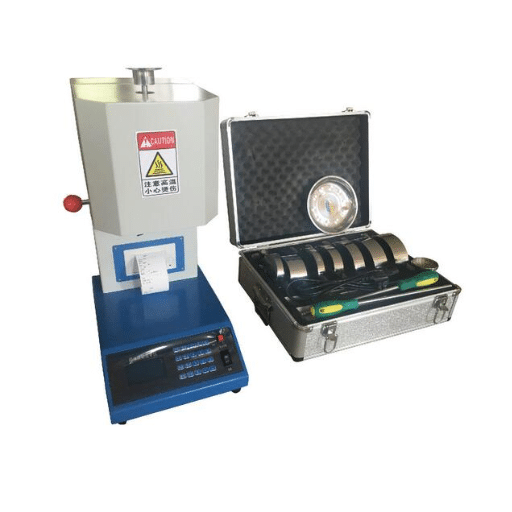
The Atterberg Limits specify the critical moisture content thresholds within fine-grained soils, thereby classifying them according to their behavior in various states. These limits are:
1. Liquid Limit (LL): Soyil turns to liquid at this moisture content, making it susceptible to overheating plastic deformation. Thus, its flow properties dictate whether Liquid Limit is reached.
2. Plastic Limit (PL): Soyil’s workability and strength becomes apparent at this moisture content, representing a change from a semi-solid to a plastic state. Thus, it discloses the moisture content transition.
3. Shrinkage Limit (SL): This limit showcases the soil’s potential for expansion and contraction, as calcium bound shrinkage pozzolans have their separate volume of water preemptively combined into the particles.
Soils forming materials compose these parameters, directing the engineer to evaluate it’s usefulness in constructions and determine the stability, cracks/failure movement possibilities due to climate changes.
Understanding Shrinkage Limit and Its Impact
Soils with higher clay moisture content SNL are easier to handle due to low plasticity. The volumetric behavior of fine-grain soils and clay under different moisture conditions makes SL an important factor in geotechnical engineering, especially during the construction stage. Not only does soil volume influence the construction schedule, but the amount of retained water also worsens the construction quality by causing cracks during evaporation. Thus, predicting the shrink-swell behavior of soil is crucial for dominating structure stability.
Understanding shrinkage limit helps engineers categorize the specific soil types considering their volumetric changes regarding moisture content. For example, soil types with high shrinkage limits stabilize reduction in volume change and are thus more favorable for construction in areas where moisture is seasonal. On the other hand, soils with low shrinkage limits are indicative of a greater potential for significant volumetric reduction. Such soils would need additional support like soil stabilization or specially designed foundations. Focusing on these parameters improves the safety and stability of engineering structures built into the ground.
Applications of Atterberg Limits in Soil Classification
Atterberg limits has a major impact in the defining and defining the types of soils for construction and geotechnical work. The soil traits, elasticity or Atterberg limits, are the liquid limit (LL), plastic limit (PL), and shrinkage limit (SL). All this information can be quantitative; therefore, assessing the behavior of the soil, especially fine, over moisture changes will certainly require its stages. Here are the applications:
- Distinguishing Clay from Silt
Determining the liquid limit and plastic limit is a key distinguishing factor to differentiate clayey silts from silty clays. Clays usually have greater LL and PL values than silts due to having finer particles and greater surface activity. In contrast, silty soils will possess lower values due to having larger particles and lower plasticity.
- Determining Soil Plasticity via the Plasticity Index (PI)
With regard to the plasticity index, it is calculated as PI = LL – PL. This determines the degree of plasticity a soil can undergo. A high plasticity index value shows expansive clays exhibiting strong plastic behavior, while a low PI suggests silty and sandy non-cohesive soils with minimal plasticity. USCS uses PI values regularly to classify soil.
- Evaluating Soil Compressibility
With high compressibility, highly plastic soils exhibiting high PI and LL values, equally high PI value indicates steep compressibility. This indicates easier prediction of soil-settlement and deformation under-loads, crucial for foundation or earth-work construction.
- Separating Organic and Inorganic Clay
From the recorded data-positions of the soil on the A-line in relation to the plasticity chart, engineers can identify the type of clay (organic or inorganic). As mentioned earlier, organic material reduces plasticity.
Decision making for infrastructure design is improved where safer, efficient aw-structural engineering can be achieved through minimize risks with the use of Atterberg limits. This tells them where risk can be reduced through soil behavior. It provides scientific reasoning beans.
How to Interpret the Results of the Plastic Limit Test?
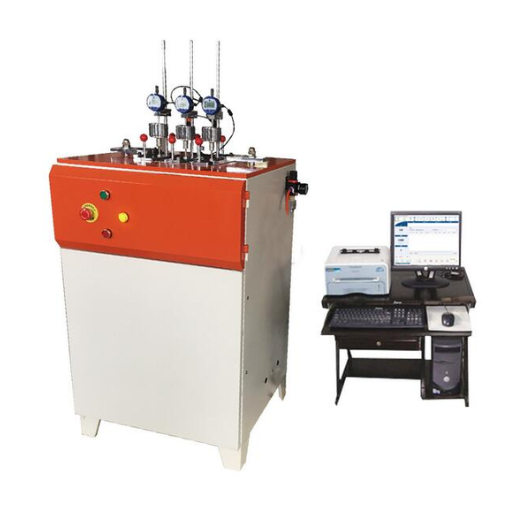
In order to analyze the outcomes of the plastic limit test, one must compare the soil’s moisture content with the benchmarks for specific soil types. The plastic limit reflects the moisture content where the soil changes from semi-solid to plastic. Soils with lower plastic limits are less coherent and more granular, while soils with higher plastic limits more fine grained and cohesive: clay. Assess these results for determining workability, soil strength, and overall construction suitability as aligned with project site needs.
Understanding Soil Properties Through Plastic Limit
In the context of modern analytical methods, soil data, and the interplay of various factors, the plastic limit serves as an important criterion for assessing soil behavior. Soils with higher plastic limits appear to hold more water, which over time affects consolidation rates and alters the predicted settlement behavior. On the other hand, lower plastic limits are typically associated with granular soils that tend to be more permeable and have a lower shrink-swell capability. These factors are important from a stability perspective in foundation design as well as during excavation from a drainage design perspective. Thorough studies of plastic limits, and other soils engineering tests like Atterberg Limits and Proctor Compaction Tests provide reliable soil performance models aiding in the seamless flow of construction and architectural work.
Comparing Plastic Limit with Other Soil Tests
|
Test/Parameter |
Purpose |
Key Points |
Relevance to Plastic Limit |
|---|---|---|---|
|
Plastic Limit (PL) |
Determines soil consistency limits |
Moisture content at plastic state |
Fundamental for shrink-swell analysis |
|
Liquid Limit (LL) |
Measures maximum water content |
Boundary of liquid and plastic states |
Helps calculate Plasticity Index (PI) |
|
Plasticity Index (PI) |
Indicates plasticity range |
PI = LL – PL |
Determines soil deformation characteristics |
|
Shrinkage Limit (SL) |
Identifies moisture loss before shrinkage |
Boundary where soil stops shrinking |
Complements PL in volume stability studies |
|
Atterberg Limits |
Classification of fine-grained soils |
Includes PL, LL, and SL |
Anchors soil consistency correlation |
|
Proctor Compaction Test |
Determines optimal soil compaction |
Correlates moisture to compaction effort |
Not directly related to PL |
|
Permeability Test |
Measures soil water flow rate |
Hydraulic conductivity of soil |
PL affects permeability indirectly |
|
Shear Strength Test |
Evaluates soil shear strength |
Resistance to deformation and failure |
PL influences cohesion-related strength |
|
Sieve Analysis |
Particle size distribution |
Classifies soil type and gradation |
Provides broader context to PL |
|
Unconfined Compression Test |
Tests soil shear strength in isolation |
Focus on undrained cohesion |
Affected by soil’s water content (PL) |
What Are the Standards for the Plastic Limit Test?
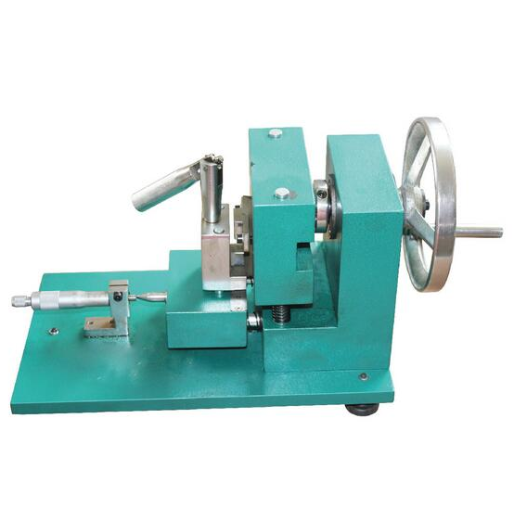
As with any other test, the reliability of the plastic limit test results is based on strict adherence to accepted protocols. The most popular standards are ASTM D4318 and ISO 17892-12. These standards describe how the plastic limit of soils should be determined, emphasizing soil sample rolling and criteria for bending and breaking transition identification. Following these methods is particularly essential while interpreting and comparing test results for studies of a geotechnical engineering nature.
Overview of ASTM D4318 Guidelines
ASTM D4318 specifies the scope and sequence of the operations necessary to determine the Atterberg limits which includes the liquid limit (LL) and plastic limit (PL) of fine-grained soils. These tests are essential in soil behavioral classification and in determining the required plasticity for engineering purposes. The liquid limit test, as per ASTM D4318, utilizes either the Casagrande apparatus or the fall cone method, depending on the project. Each test requires the addition of water to the soil until a specific groove made by a standard marker closes with a set number of strokes (typically 25 for the liquid limit).
For the plastic limit test, soil is shaped into threads, which are gradually thickened until fissures appear at about 3.2 mm (1/8 inch) wide. This measure represents the transition from the plastic to the brittle stage. The procedure emphasizes a uniform rolling technique and soil conditioning to ensure that measurements can be reproduced. In addition, ASTM D4318 outlines procedures for the oven-drying of soil samples, sieving to isolate larger particles, and managing water content at calibration stages.
Additionally, the standard comes with an outline on how to report test results, for example, what the soil type is, how the sample was prepared, and the tools used. Following these procedures allows geotechnical engineers to make accurate assessments about the soil’s characteristics for different projects and technical evaluations. Further improvements driven by industry advancements and newer insights into methodology reinforce the reliability of ASTM D4318 in modern practice.
Compliance with Testing Standards and Best Practices
Adhering to testing specifications like ASTM D4318 is crucial to maintaining the accuracy and consistency of soil test procedures. Automated moisture testing devices and digital Atterberg limits measure coupled with advanced technologies refine diurnal variation, enhancing reproducibility and efficiency in the workflows concerned with soil testing. In addition, practitioners are able to recognize changes and adjust their methods in accordance with evolving paradigms using updated datasets, industry reports, and academic publications. Implementing such changes would also enable laboratories to safeguard their practices against obsolescence, fortifying their compliance with contemporary technical stipulations and increasing the credibility of their results.
Reference Sources
-
Review of Recent Developments and Understanding of Atterberg Limits Determinations: This study highlights the challenges and advancements in determining soil consistency limits, including the plastic limit. It critiques traditional methods like the hand-rolling test for its operator variability and introduces alternative approaches such as strength-based fall cone methods.
-
A New Method of Measuring Plastic Limit of Fine Materials: This research introduces a novel device based on the falling cone apparatus. The method applies a 54 N fast-static load to achieve a 20 mm penetration, identifying the water content at the plastic-to-semi-solid state transition.
Frequently Asked Questions (FAQs)
Q: What is the plastic limit test and its significance in soil testing?
A: The plastic limit test is used to determine the moisture content at which a soil changes from a semi-solid to a plastic state. It is an essential part of the liquid and plastic limits tests that help classify soil behavior in construction materials.
Q: What apparatus is included in a typical limit test set for the plastic limit test?
A: A typical limit test set includes a plastic limit roller, a glass plate, a spatula, and graduated cylinders. These testing tools are crucial for accurately determining the plastic limit of the soil.
Q: How does the liquid limit machine assist in the testing process?
A: The liquid limit machine is used to perform the liquid limit test. It helps determine the moisture content at which soil changes from a plastic to a liquid state, providing valuable information about the soil’s consistency and behavior.
Q: What is the relationship between the liquid limit and plastic limit of the soil?
A: The liquid limit and plastic limit of the soil are critical factors in understanding soil properties. The plastic limit is the moisture content at which soil transitions from a semi-solid to a plastic state, while the liquid limit indicates the moisture content at which it changes from plastic to liquid state.
Q: What testing tools are necessary for performing the shrinkage limit test?
A: The shrinkage limit test typically requires a shrinkage limit dish, a spatula, and a graduated cylinder. These tools help determine the moisture content at which a soil can no longer shrink further, providing insight into the soil’s behavior under varying moisture conditions.
Q: What standards govern the procedures for the liquid and plastic limits tests?
A: The procedures for the liquid and plastic limits tests are governed by ASTM D4318 and AASHTO T90 standards. These standard test methods outline the specific steps and requirements for accurately determining the limits of a soil.
Q: How is the moisture content limit determined during the plastic limit test?
A: The moisture content limit is determined by rolling a soil paste with a plastic limit roller until it crumbles. The moisture content at this point is recorded, indicating the plastic limit of the soil.
Q: Can the plastic limit test be used for all types of soil?
A: Yes, the plastic limit test can be used for various types of soil, but it is particularly useful for fine-grained soils, as they exhibit distinct plastic and liquid states. The test helps assess the behavior of these soils in construction applications.
Q: What is the importance of using graduated cylinders in the testing process?
A: Graduated cylinders are important for accurately measuring the volume and moisture content of soil samples. This precision is crucial for determining the plastic limit and liquid limit of the soil, ensuring reliable test results.
Q: Where can I find high-quality testing tools for the plastic limit test?
A: High-quality testing tools, including the plastic limit roller and liquid limit machine, can be found at suppliers like Gilson Co. They offer a range of laboratory equipment designed for soil testing compliance with ASTM and AASHTO standards.






